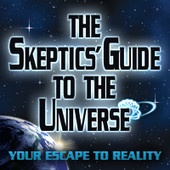 From the “Things I should patent but probably won’t” department…
From the “Things I should patent but probably won’t” department…
Predictive Loudspeakers
Yesterday, I was talking to a loudspeaker designer, who was describing the mechanical limitations of speaker cones. One of the key problems is that a loudspeaker cone is basically a mass on a spring. Once you give it an impulse, it will then rebound to its original location with a velocity and momentum, and these will all affect the sound that comes immediately afterwards. It also, of course, has its own resonant frequencies. And these factors mean that people have spent a lot of time trying to minimise the mass and resonance of loudspeaker cones or replacing them with complex electrostatic devices, or vibrating ribbons, or whatever.
Now, it occurred to me that as we start to get digital linkups to loudspeakers, we can do something we could never do before: we can predict the future.
At least, we can buffer the digital signals for a while as they come into the loudspeaker. As long as we do this for all of our channels equally, the delay is not usually a problem. (I am thinking primarily about listening to music at home or in a studio; if this was audio for a movie, you’d need to delay the image by the same amount, and it wouldn’t work at all for live PA systems, but bear with me…) We could then look ahead in that buffer and provide an impulse to the loudspeaker cone now based not just on what we want now, but on what we are going to want a few milliseconds down the line. The signal you feed to the speaker would then be the first derivative, or the Laplace transform, or something, of the sound you actually want to come out once delays, masses and spring co-efficients are taken into account.
Now, I’m not a control systems expert, and I don’t know how difficult constructing a dynamic PID-feedback system would be, but this is at least a very controlled environment, and the system could, if needed, be self-monitoring and adapt over time.
Such analysis could, of course, already have been done in other places that have access to the digital stream – like the CD/DVD player – but the earlier stages will not typically have much information about the amps and speakers. Now, however, the trend is towards active speakers which include their own carefully-matched amps, and for digital, even wireless, links replacing the old analog cables. So this becomes quite possible, and the market is ready.
What do you think? Anyone want to invest huge amounts of capital and help me make the speakers of the future? Or is this already available?
 From the “Things I should patent but probably won’t” department…
From the “Things I should patent but probably won’t” department…


Recent Comments